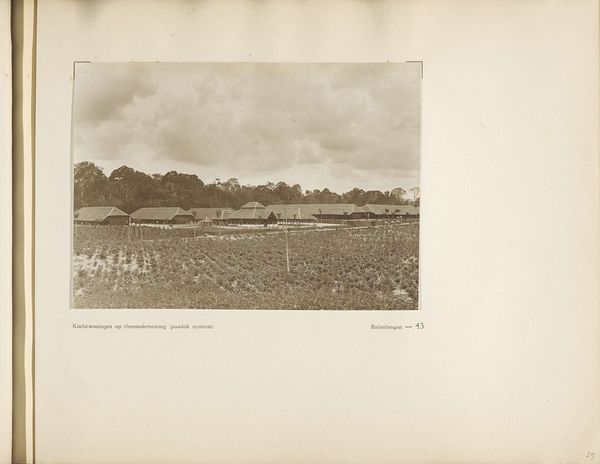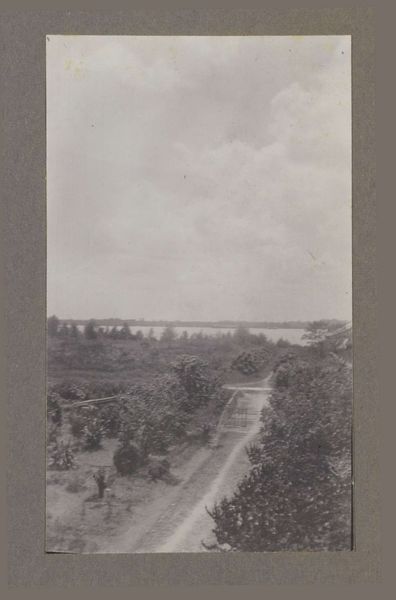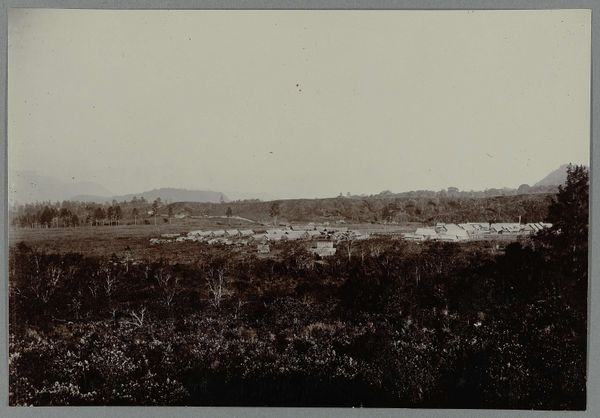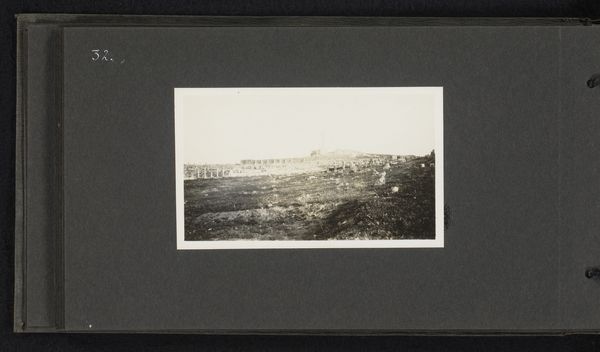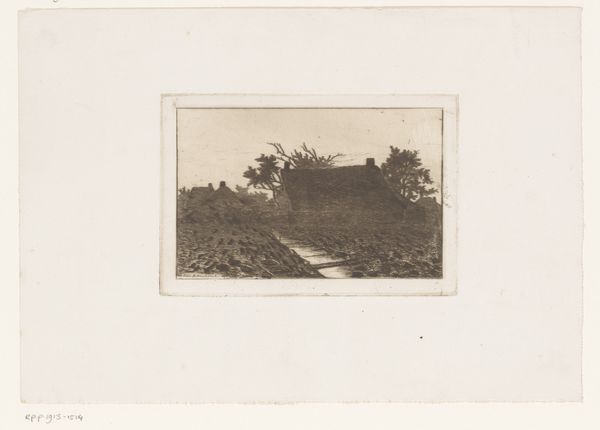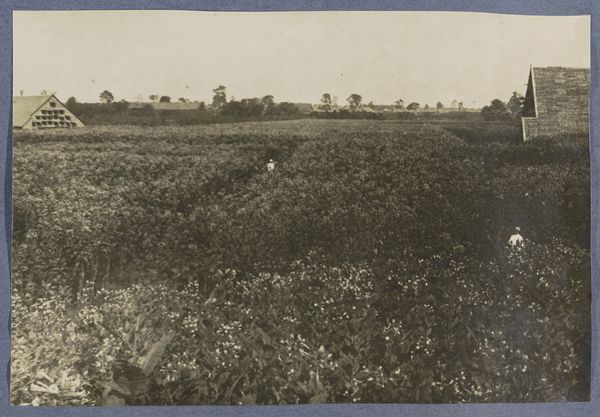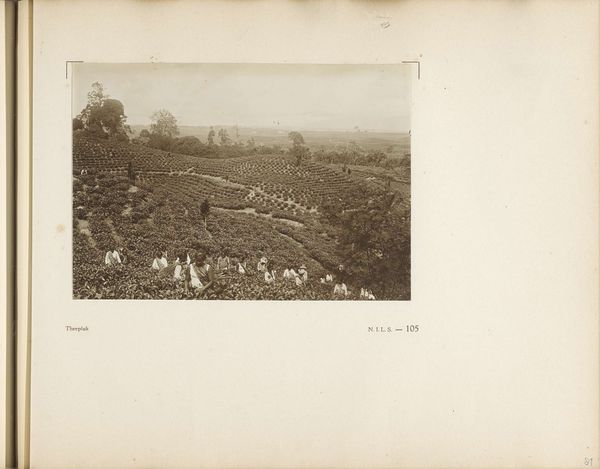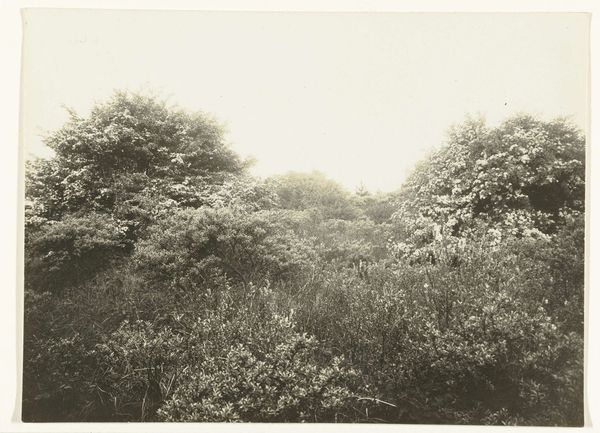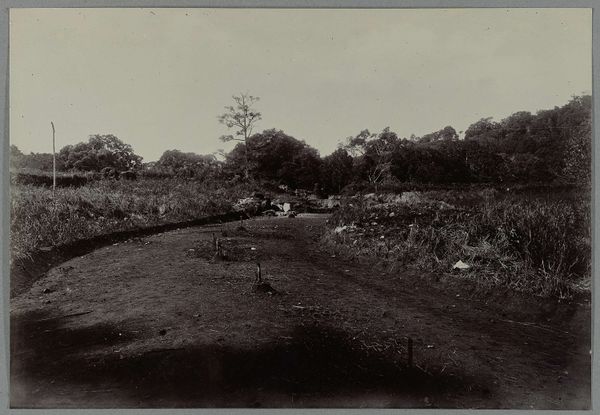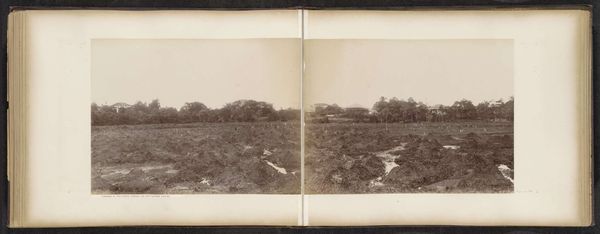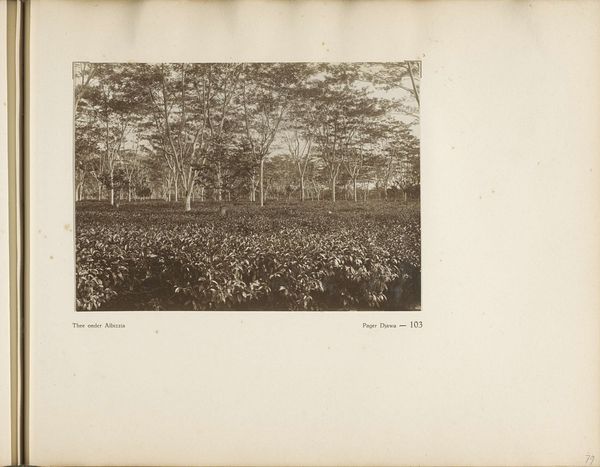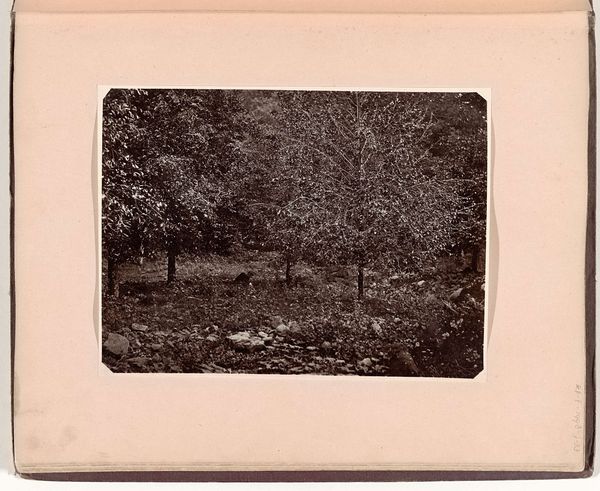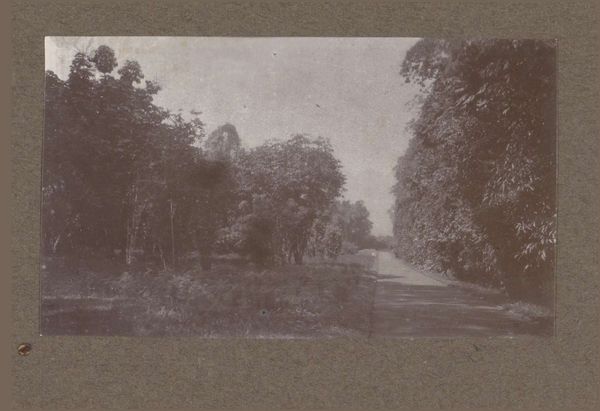
print, photography
# print
#
landscape
#
photography
#
realism
Dimensions: height 65 mm, width 123 mm
Copyright: Rijks Museum: Open Domain
Curator: The air feels heavy looking at this print, doesn't it? A sort of dreamy sepia washes over the scene, yet underneath that... unease. Editor: Indeed. We’re looking at “Plantageveld met pluksters in Nederlands-Indië,” or "Plantation Field with Female Pickers in Dutch Indies." The image, a photograph rendered into print, captures a plantation scene, dating roughly from 1920 to 1930, and the photographer is Klaas (I) Kleiterp. The starkness grabs me; the repetition of the field, of the bodies bent in labor. Curator: You nailed it—the repetition! That's the source of my discomfort. At first glance, it's this endless field, soft light. But then you focus and realize, it's all the same posture over and over. All those bowed backs, blurring into the landscape itself. Makes me wonder about the artist’s intentions, showing labor, showing...ownership? Editor: I'd argue, and it's perhaps inevitable given the period and context, that this realism obscures more than it reveals. "Realism" tends to idealize rather than scrutinize power dynamics. The “dreamy sepia,” as you put it, romanticizes colonial exploitation. The women picking become an indistinct mass within a landscape controlled by colonial powers. Curator: So it becomes propaganda, unintentionally perhaps? An ad for paradise… if you ignore all the bending? Is there symbolism there? This dead tree right in the center? Editor: Precisely. And the dead tree – yes! Stripped bare, dominating the composition, it perhaps signifies the exploitative force at the heart of this "idyllic" scene. Dutch colonial power extracting life from the land and its people. Photography was also complicit; think about whose perspectives and voices were favored at the time. The lack of context leaves the viewer susceptible to passively viewing this image as pastoral beauty, failing to critically acknowledge historical violence. Curator: Gosh. Makes you look at it with different eyes, doesn't it? Almost makes you want to rip it apart, reassemble it somehow, to make visible what was hidden. Editor: Exactly! The aesthetic experience needs to extend beyond simple consumption and challenge viewers to confront history's difficult truths. The potential of the medium is more than the aesthetic presentation itself. Curator: Absolutely. Thanks for giving my eyes some new glasses, I'll leave this image with many unsettling thoughts buzzing through my brain! Editor: Likewise, and let’s remember the lives flattened into mere scenery in such images—let their unheard voices finally prompt dialogue.
Comments
No comments
Be the first to comment and join the conversation on the ultimate creative platform.
